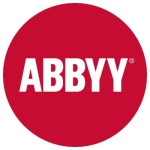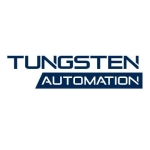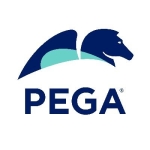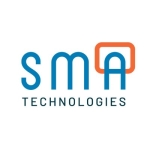What is our primary use case?
I automated the use cases related to medical processes such as posting the payments, downloading the files from the portal, and claiming medicals.
How has it helped my organization?
It is easy to create automation, and it is also easy to test for your test case. If you want to go live with a process, that is easy. You can publish the package from UiPath Studio, and in Orchestrator, you can see if the bot is working fine or not in the unattended mode. If the bot is not working fine and continuously throwing an error, you can stop it from your side. You do not have to log in and stop the bot manually.
One of the projects where UiPath has been beneficial is related to payment posting. It is a weekly process that we run on Friday or Saturday. There are about 1,500 records. Before automating it, we could handle 150 to 200 records per day. It took about 20 days to develop the bot, and the testing took two to three hours. After ensuring everything is fine and publishing it, in 10 hours, we are able to post all the records we have. It takes 15 seconds to post one record. We have developed this automation for one client who has multiple clients. We created a master config for that and changed the credentials and the input file. This way the bot processes one client and posts everything, and then the second client and posts everything. It will continuously run every day.
We also used Computer Vision automation for one of the projects, and we also have automation that gets triggered based on a real-time event. For example, on receiving a client email, the bot runs and does the required task.
What is most valuable?
As compared to other tools, UiPath is more specific. If you need to develop something specific and publish it, UiPath is very helpful for that.
Another valuable feature of UiPath is the training. Those who do not have a programming background and want to understand how UiPath works can go to the UiPath portal to get free training. They can train themselves as a business analyst, a developer, or an automation developer. The training system is good.
The development and practical aspects are also good. When you get a project and you start working with UiPath, you need to buy all the licenses, but you can also develop some processes without buying a license for demo or testing purposes. You can show it to your manager without buying the license.
In advanced features, there is a feature called Document Understanding, which is helpful for scraping the required data from a PDF.
UiPath Academy is very simple. You do not need any guidance on how to use it. After you log in, you get training based on your role, such as whether you are a developer, solution architect, analyst, or delivery manager. You go to the training section accordingly, which not only has text or PDF but also some videos and practical scenarios. They provide some dummy files as well that you can implement in your system. You can use them to see if it is working or not.
The UiPath forum or community is also there. If you have some questions, people will help you with that. Someone will definitely reply to you, and you will get a solution.
What needs improvement?
Some kind of code repository would be good. Other than that, everything is fine in UiPath. They improve it every quarter and bring something new.
For how long have I used the solution?
I have been using this solution for three years.
What do I think about the stability of the solution?
It is a stable product. In the last year, I have not found any kind of issue or server error. I did not have any issues where the server was down, so you can rely on UiPath.
What do I think about the scalability of the solution?
It is scalable. UiPath provides all kinds of solutions. Based on that, you need to build your project and diagram. You can then start the job immediately.
We are in the healthcare business. My client has about 5,000 members, but over the past year, we have deployed about 25 processes along with 30 payment posting processes. We have five developers.
You can buy licenses depending on the number of bots that you have. If you have 10 bots, you do not have to buy 10 licenses. You can buy one license and insert that one license to run the bots one by one. You can buy as many licenses based on your convenience.
How are customer service and support?
When you have a licensed version, you can raise a ticket in case you have any issues. They usually respond within 24 hours, but they can also take two to three days.
We were facing an issue with the Computer Vision process for 20 days, and we were not able to find a solution. We raised a ticket with UiPath. They connected with me in two or three days. They monitored all the things and recommended the changes. After making the changes, everything worked fine.
I would rate them an eight out of ten because they should give an immediate resolution for any production-related issues. They should have connected immediately after we created the ticket, but they connected after two to three days, so we lost the money for two to three days.
How would you rate customer service and support?
Which solution did I use previously and why did I switch?
I have only used two or three RPA tools. As compared to Power Automate and Blue Prism, UiPath is the best. The cost of Power Automate is a little bit low in comparison to UiPath, but Power Automate does not have flexibility. If you have a large project, go with your UiPath, and if you have a small project, you can go with Power Automate.
UiPath is also good when you have use cases where you need to save your portal credentials or FTP credentials. You can easily use the features of UiPath Orchestrator for that, whereas, with Power Automate, there is no way to save your credentials. You need to save them somewhere else, such as in a text file or an Excel file, which is not secure because if someone opens the file, they can see the credentials. In the case of UiPath, they can see only the username, not the password. This kind of protection is there.
How was the initial setup?
UiPath provides two options: One is a cloud-based Orchestrator and the other one is an on-premises Orchestrator. For safety purposes, most of the companies are not using the cloud-based Orchestrator. They are using the on-premises Orchestrator, but you need to set up your database and connect it with Orchestrator. This way, all the things that you have done at the project level are stored in your database. UiPath does not take any responsibility for that. If you do not have a database and you want to run a process smoothly, you can go for the cloud one.
My current project is on the cloud because they did not want to install their own database and set up all the things. It was better to use the cloud option because they did not need to install anything on the system.
The deployment probably takes one to three days. When you buy your license and connect with them, they will guide you on how to set up things. It is easy for me because I have been using it for the last three years.
What was our ROI?
We calculate ROI every month end to see how much we have saved. For example, if we have a bot for downloading four files, we do not need to redevelop it for another client. With a few modifications, we can use the same bot, which saves money.
What's my experience with pricing, setup cost, and licensing?
In comparison to Power Automate, UiPath's price is a little bit high.
The Community edition of UiPath Studio is free. If you want to learn something or develop a process, you can install the Community edition of UiPath Studio. If you buy a license for UiPath Studio, the updates do not happen automatically, whereas, in the Community edition of UiPath, all the things are updated automatically. Once you log in yourself, after every four months or five months, when there is an update, it will automatically update itself, but if you buy the licensed version, it will not update immediately. It will not impact your project.
What other advice do I have?
It is better to use automation. Nowadays, every company is adopting automation. I would recommend choosing an RPA tool based on your requirements. I have not used Blue Prism or Automation Anywhere much, so I cannot compare it with them. However, UiPath is better than Power Automate. Based on my discussions with other people who use other RPA solutions, it seems UiPath is the best. With separate components such as UiPath Studio and UiPath Orchestrator, you do not mix up things, so you can clearly do your job.
I would rate UiPath a nine out of ten because I have not had any disappointment from using UiPath Studio and UiPath Orchestrator. None of the jobs that I have built so far have failed.
Disclosure: PeerSpot contacted the reviewer to collect the review and to validate authenticity. The reviewer was referred by the vendor, but the review is not subject to editing or approval by the vendor.























